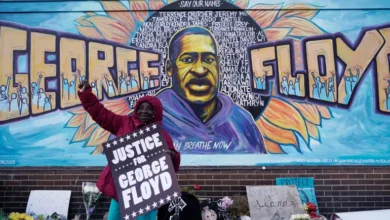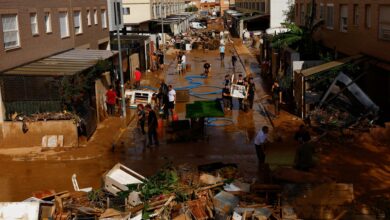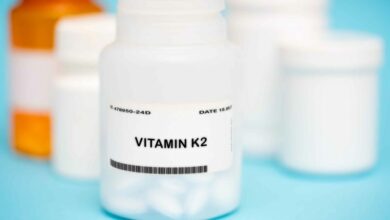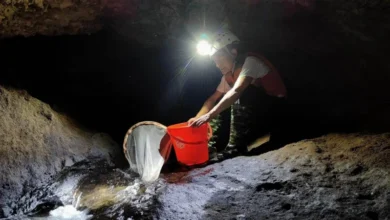Why the ‘dirty side’ of a hurricane can be 50% stronger than its ‘clean side’
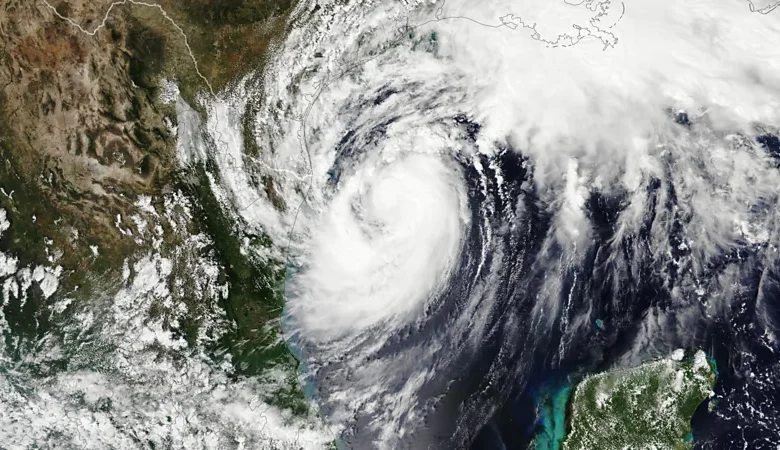
In tropical storms, location matters when it comes to what damage to expect – especially if you’re on the “dirty” side of a hurricane, where winds can be up to 50% stronger.
Hurricanes can be difficult to forecast. The speed and path of a hurricane depend on a complex interaction between the storm and its own internal circulations, and the Earth’s atmosphere. High- and low-pressure systems can alter the speed and path of a hurricane, while the air which the hurricane is embedded in and travelling through is constantly moving and changing.
They typically move at a speed of 15 to 20mph (24 to 32km/h), but some linger – causing devastatingly heavy rain and flooding. They can speed up – reaching 60mph (97km/h) and travel in a straight line, or they can wobble and loop.
As Hurricane Francine slammed the southern US with strong winds and heavy rainfall, communities in Louisiana were hit by flooding, while in Alabama and Mississippi, thousands have been left without electricity.
Hurricanes are becoming increasingly unpredictable – and dangerous, due to climate change.
The Federal Emergency Management Agency (Fema) has urged the public to prepare, warning that the National Oceanic and Atmospheric Administration’s (Noaa’s) hurricane prediction for 2024 was “the most aggressive forecast on record”.
Hurricanes also have a right and a left side – in the northern hemisphere, known as a “dirty” and “clean” side respectively. But if you’re in the southern hemisphere, the sides switch – the left side becomes the dirty side, because the hurricane’s winds spiral around its centre in a clockwise motion, as opposed to in the northern hemisphere where they spiral counter-clockwise.
Robert Rogers, a meteorologist at Noaa’s Atlantic Oceanographic and Meteorological Laboratory in Miami, Florida, explains why hurricanes have a dirty side.
Why do hurricanes have one side more dangerous than the other?
Usually, one side of a hurricane has stronger winds than the other side – we call this a type of asymmetry. There are several reasons for this, but the primary reason is because the motion of the storm is added to the background circulation of the hurricane. In the northern hemisphere, that means that winds tend to be stronger on the right side of the direction of motion of the storm. Similarly, winds tend to be weaker on the left side of the direction of motion. The dirty side is that side with the stronger winds, on the right side of the storm motion. The clean side is the left side of storm motion – again, in the northern hemisphere.
Why is the dirty side more dangerous, and by how much?
It is more dangerous because that is where the winds are stronger. Sometimes the winds can be up to 50% stronger on the dirty side than on the clean side, particularly if the storm is moving quickly, for example, 15 to 20mph (24 to 32km/h). Another reason it can be dangerous on the dirty side is because, during landfall, that is the side where water is being pushed forward, resulting in greater storm surge.
Is this difference more pronounced in some hurricanes than others?
The difference is more pronounced for fast-moving hurricanes.
How well can we predict how much worse the dirty side is going to be?
Computer models are largely capable of predicting asymmetries in structure, such as the variation in wind across the hurricane. So it can be predicted fairly well.
Is there anything people need to do to prepare if they’re forecast to get the brunt of the dirty side?
If you are expected to be on the dirty side of a hurricane, you should prepare for worse conditions, such as winds, [storm] surge, possibly rain and severe weather, than if you are on the clean side. Since the wind field usually extends over a larger area on the dirty side, you should also expect conditions to deteriorate sooner than if you are on the clean side.
Is this side impacted by climate change – has it been getting more dangerous, or is it hard to tell?
Since the dirty versus clean side is largely determined by the motion of the hurricane, it is not clear if climate change is making the dirty side worse. To the extent that climate change changes the speed of hurricane motion, that could affect the dirty side. If anything, some research has suggested that the speed of hurricane motion is decreasing with climate change. This relationship is still being debated in the community, though.


